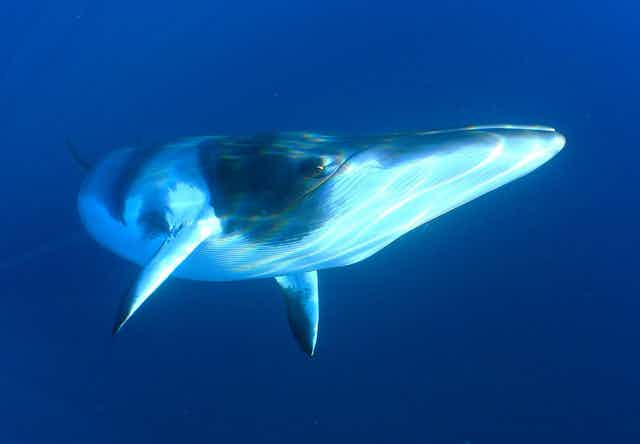From June 26 to July 6 2013 one of the most intriguing environmental court cases in years will be heard by the International Court of Justice (ICJ) in The Hague. Australia has taken Japan to court over whaling in the Southern Ocean.
In May 2010 Australia filed an application at the International Court of Justice to commence proceedings against Japan in relation to Japan’s program of “scientific whaling”, JARPA II.
Australia wants the court to declare that Japan is in breach of its international obligations under the International Convention for the Regulation of Whaling (ICRW).
Specifically, in its deposition to the court, Australia contends that Japan “has breached and is continuing to breach” its obligations under the international convention. The obligations are “to observe in good faith the zero catch limit allocated to the killing of whales for commercial purposes; and its obligation to act in good faith to refrain from participating in commercial whaling of humpback and fin whales in the Southern Ocean Sanctuary”.
Australia has further asserted that Japan has refused to accept recommendations of the International Whaling Commission (IWC, established under the convention) to protect whale stock for future generations and recommendations to not proceed with JARPA II. Australia also argues that these matters are not able to be resolved in the International Whaling Commission.
What is JARPA II?
JARPA II is the second of Japan’s “Whale Research Program under Special Permit in the Antarctic”. JARPA I ran from 1987 to 2005. During this period around 6,800 minke whales were taken.
In JARPA II Japan proposed to catch up to 935 minke whales, 50 fin whales and 50 humpback whales per season. So far it has not reported taking any humpback in the Antarctic.
What does Australia hope to achieve in the ICJ?
Australia wants the Court to find Japan in breach of its international obligations in implementing the JARPA II program in the Southern Ocean, and to order that Japan:
cease implementing JARPA II
revoke any authorisations, permits or licenses allowing the activities which are the subject of this application to be undertaken
provide assurances and guarantees that it will not take any further action under the JARPA II or any similar program until such program has been brought into conformity with its obligations under international law.
What has happened so far in the case?
On May 31 2010 – Australia took Japan before the ICJ over “Whaling in the Antarctic”. On May 9 2011 Australia filed its case in writing and one year later Japan filed its “Counter-Memorial” (its own case).
On May 18 2012 the Court decided that there would be no second round of pleadings and that the pleadings in the case were closed.
New Zealand got involved on November 20 2012, filing a declaration of intervention in the case, declaring that, as it was a Party to the international convention on whaling, it has a “direct interest in the construction” that might be placed upon the convention. New Zealand wanted to provide its interpretation of Article VIII of the convention. This article permits the killing of whales under a Special Permit for purposes of scientific research.
New Zealand’s intervention centres, among other things, on the argument that a Special Permit to kill whales can only be given if killing is for scientific research, the killing is necessary and proportionate to the outcomes of the research, and it will have no negative effect on whale stocks. In addition, Japan has discharged its duty of cooperation with the Scientific Committee and the whaling commission.
New Zealand argues that issuing a Special Permit for JARPA II doesn’t meet these requirements and therefore that permits should be prohibited.
What happens next?
Oral pleadings before the court will begin in June. Australia will plead first, followed by Japan. New Zealand will then plead on its intervention.
Both Australia and Japan have the right to respond to the other’s initial pleading and to those of New Zealand.
The case will be heard over three weeks. The court will then retire to deliberate – this may take several months.
After it deliberates the court will deliver its judgement. The judgement may be fully in favour of Australia, or of Japan, or it may fall somewhere between. The Decision of the Court is final and binding on both parties - and without appeal.
Who sits on the International Court of Justice?
The International Court of Justice is the principal judicial organ of the United Nations. It was established by the United Nations Charter in June 1945 and began its activities in April 1946.
The court is currently composed of a President (from Slovakia), a Vice-President (Mexico), and Judges from Japan, France, New Zealand, Morocco, Russian Federation, Brazil, Somalia, UK, China, USA, Italy, Uganda and India.
Since Australia does not have a judge of its nationality on the court it is entitled to appoint an ad hoc judge to sit on the case. The court has accepted Australia’s designation of the eminent Australian international lawyer Professor Hilary Charlesworth to sit on the case.

